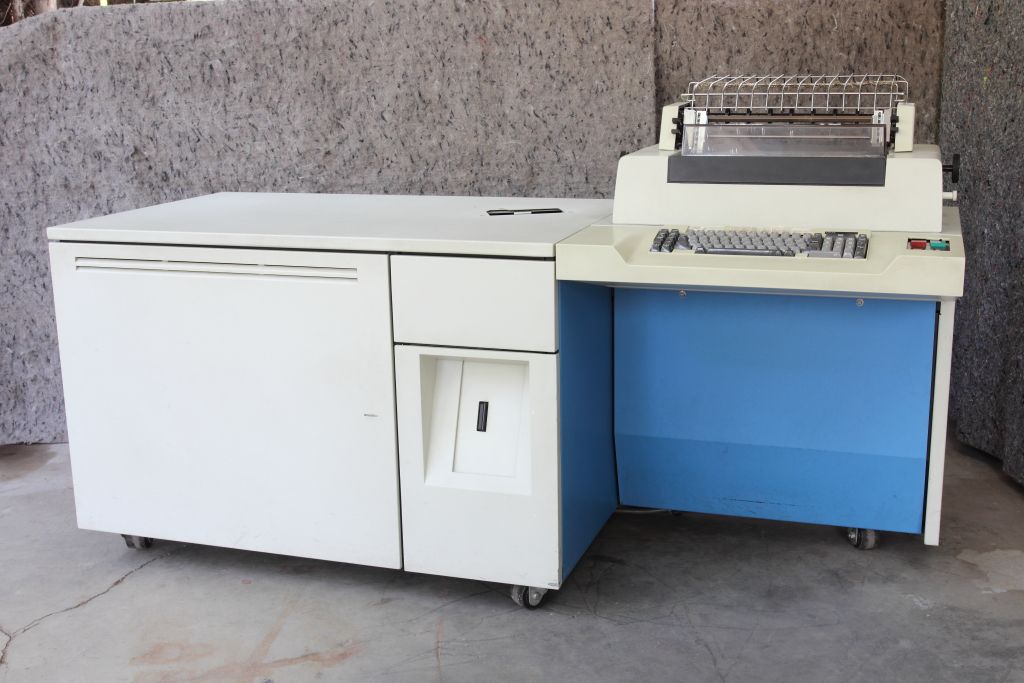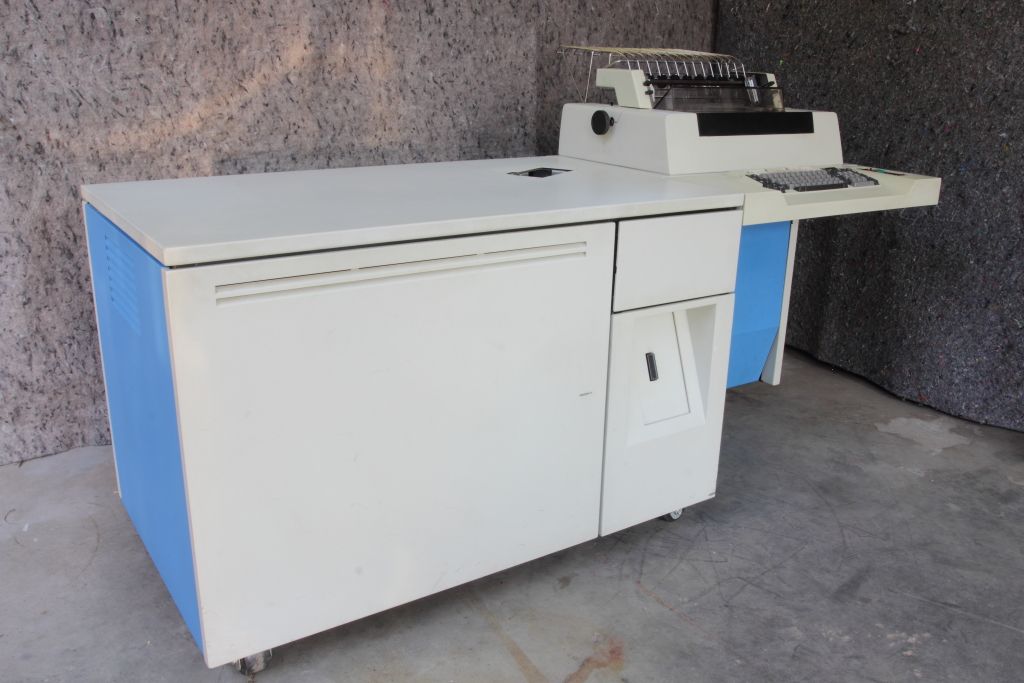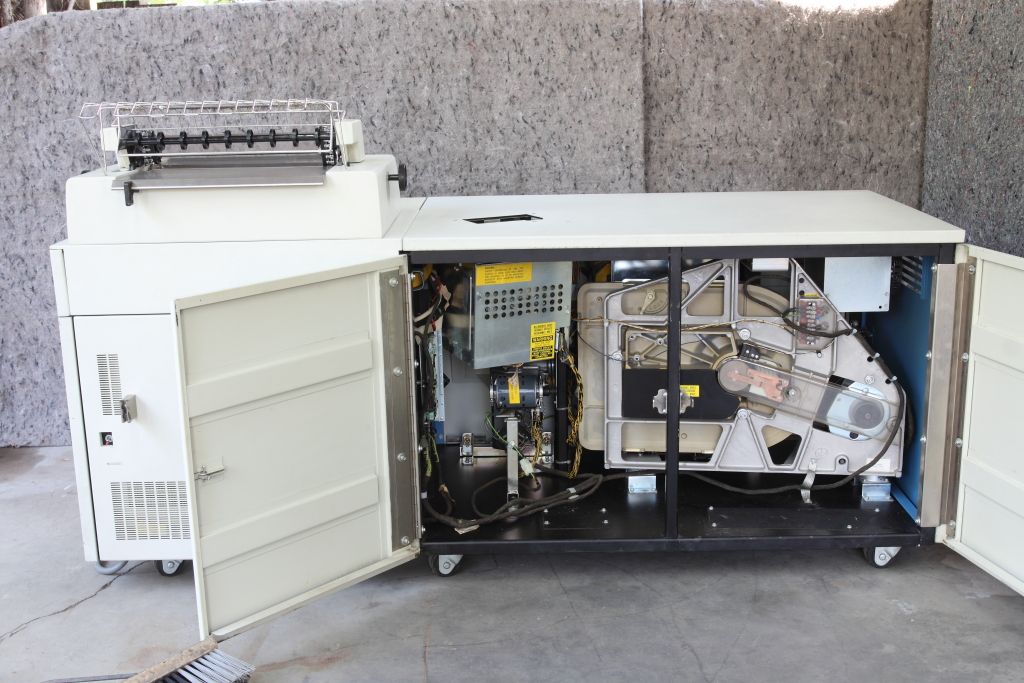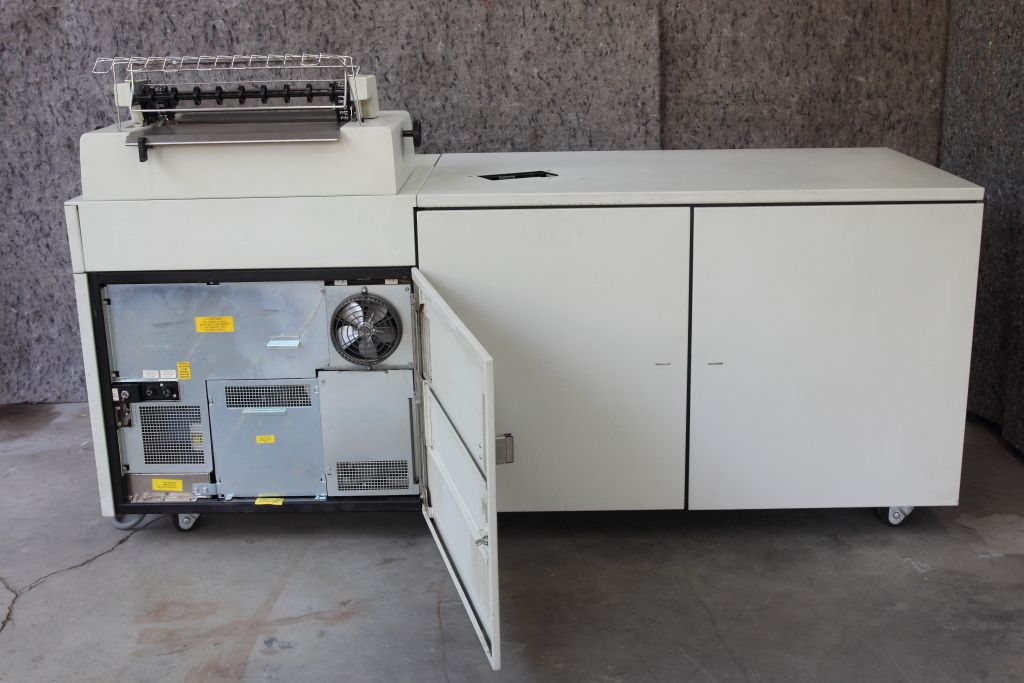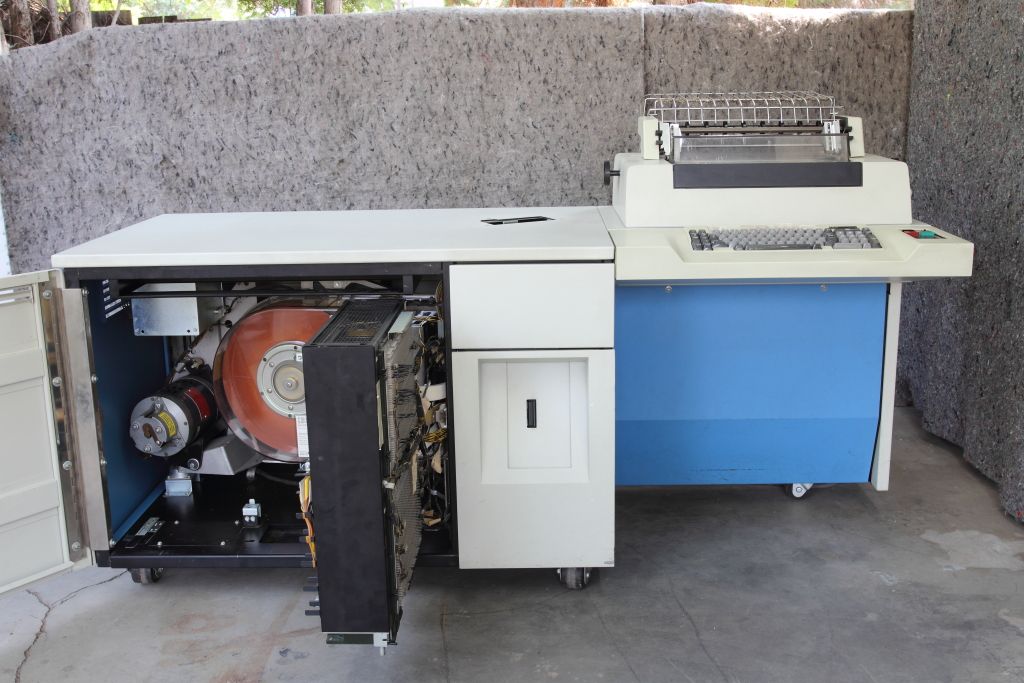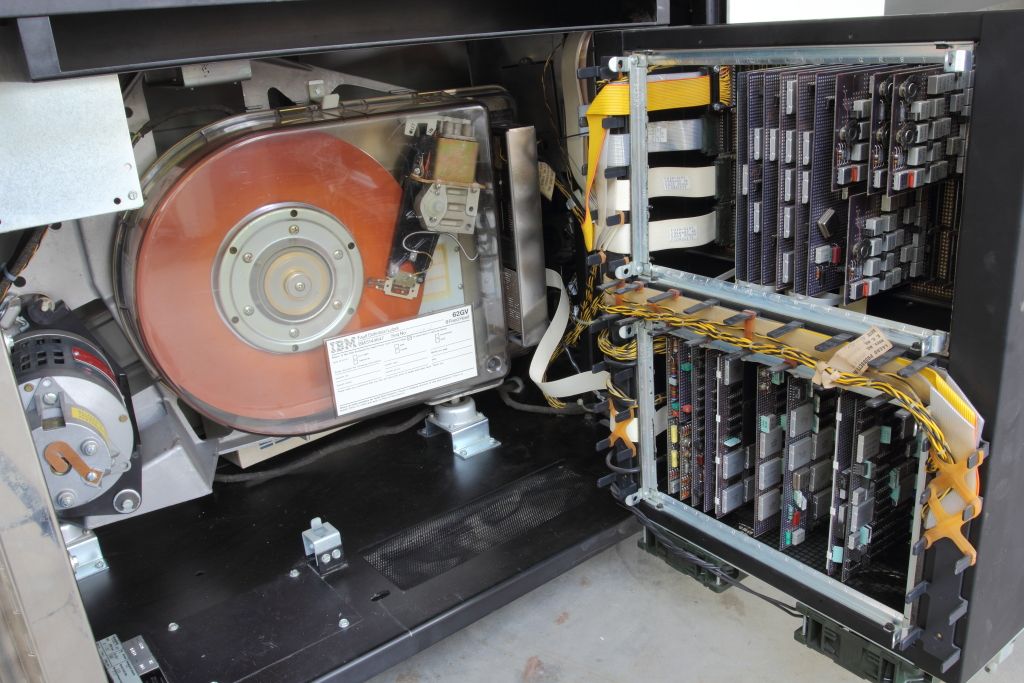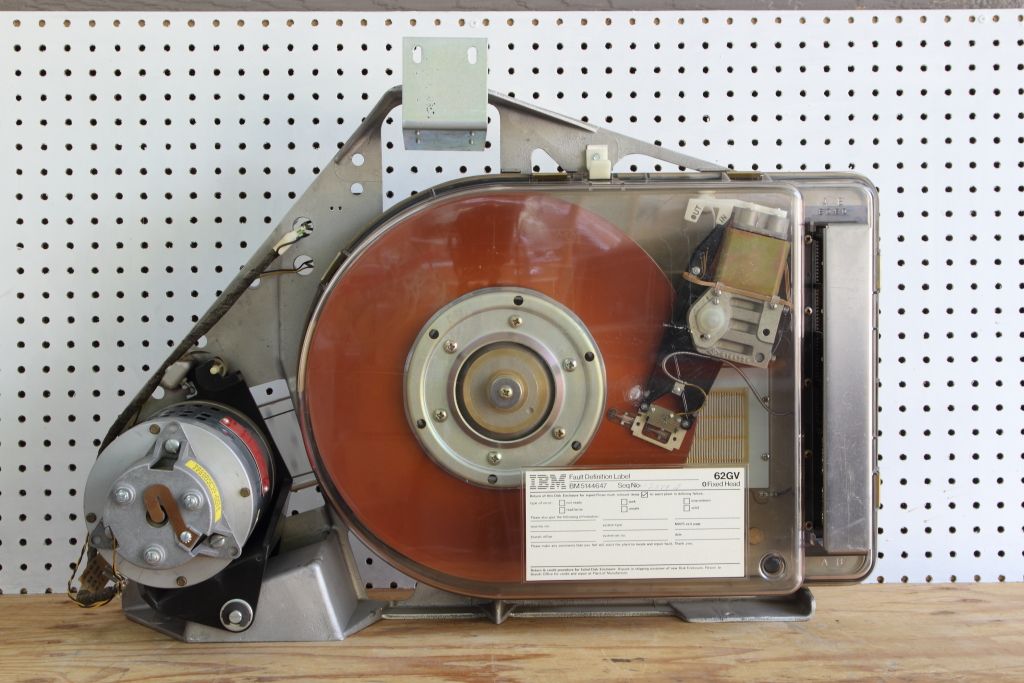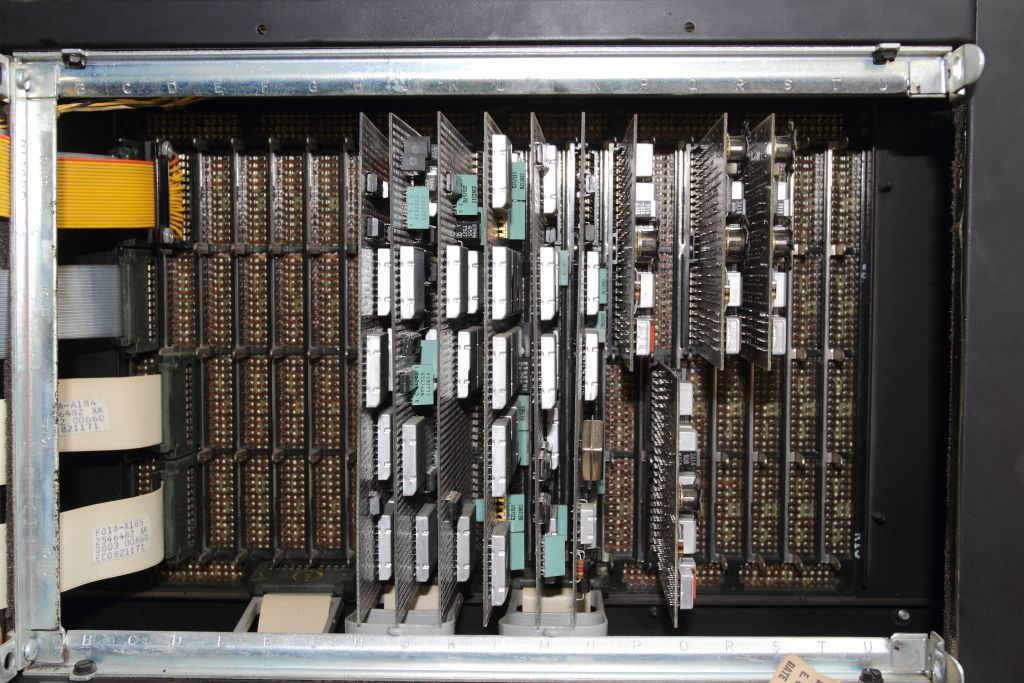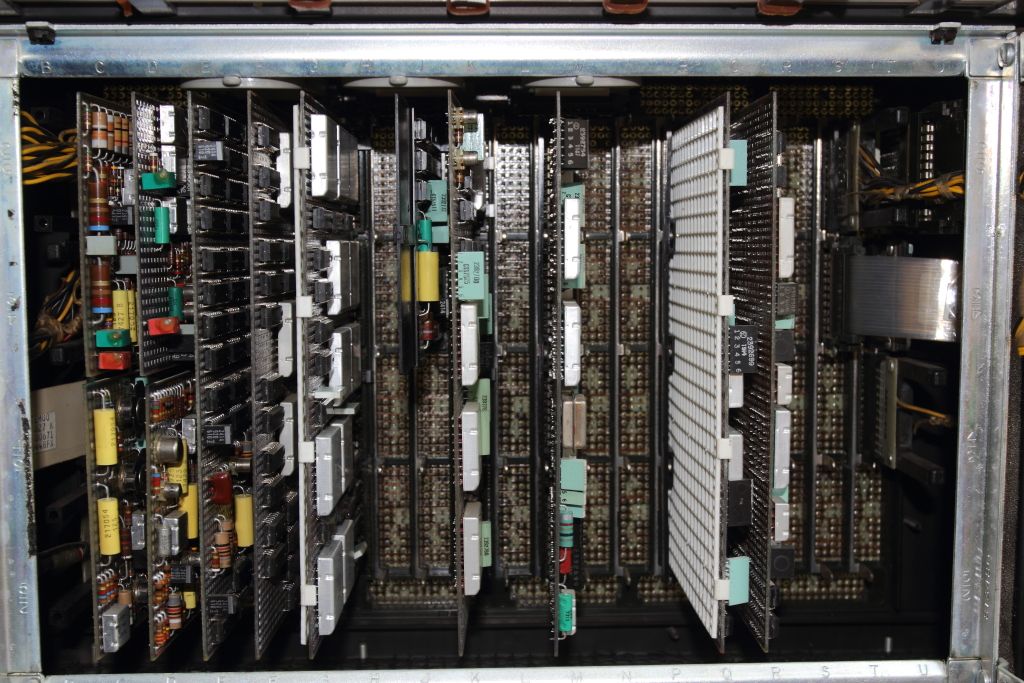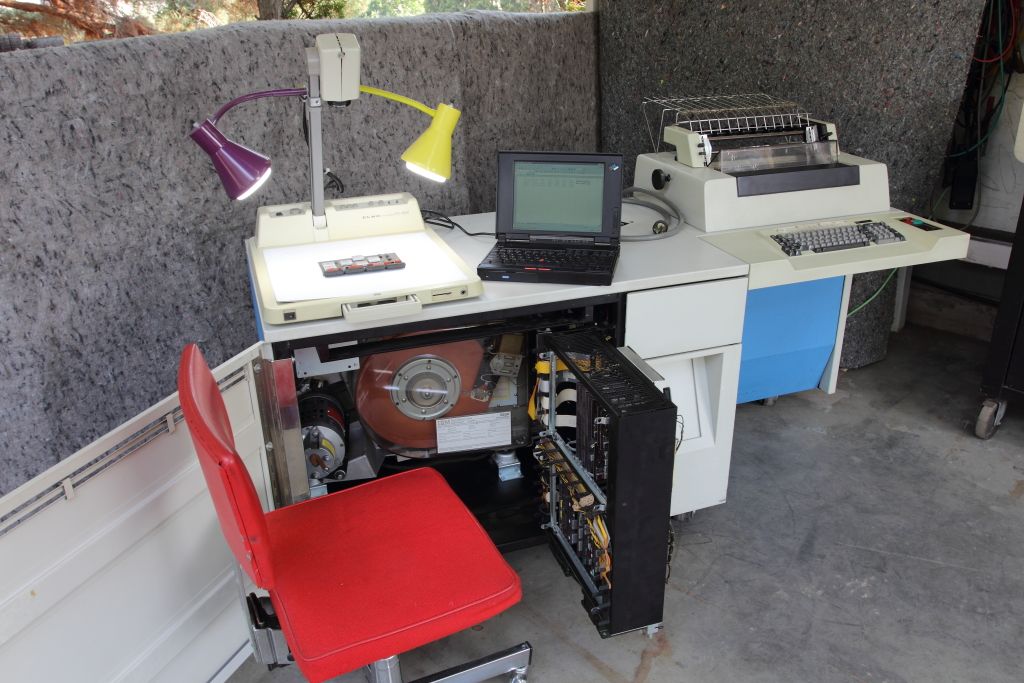NeXT
Veteran Member
I'm sure we all have wish lists for computers...with some unrealistic desires. For me early on (2004 or 2005) I was attracted to Mike Ross's selection of finds over at the Corestore. From what started off initially as trying to move a free System/36 from Michigan to British Columbia to just perusing his other finds, among them was both of his System/32's - http://www.corestore.org/32.htm
These are neat machines. It's somewhat the successor to the System/3 which was a single-user business computer that you could probably fool someone as saying it was a mainframe but it wasn't necessarily that.
They were cheap. IBM struggled for years to get into the lower-end business market because most companies didn't need a mainframe and the System/3 was too large in one model or another to fit into most offices. It's rental and leasing costs also were generally cost prohibitive, however with all that against it that was not its downfall and in fact the System/3 was successful enough that in 1975 the System/32 was released to succeed it.
Smaller, backwards compatible and expandable. The entire computer was now small enough to fit through a doorway and was as tall as an office desk while using only 800w. It's rental rates were also considerably more attractive as well (typically being $1000/month in 1975, so it was still seriously expensive if you could not make efficient use of it) making it the start of another successful line of business computers that would eventually unify into the AS/400 and the modern "System i".
So anyways these machines now being considerably smaller began to make their way into more and more remote locations. Small towns, portable offices and private residences for self-employment gigs. Some machines were even purchased outright and a variety of options were available beyond more system memory and disk storage. Modems, mag card readers, magnetic ink cheque sorters and intelligent IBM card punch machines like the 129 where you can operate it as a card reader but also as a card punch peripheral for the system/32. It also featured compatibility with the IBM 3741 where data entry could take place remotely from the System/32 and delivered for processing via the then very new 8" floppy disk.
So a machine like that is extremely limited in its suite of applications that make sense out of its own niche operations and the machine itself is still quite large and very heavy, so to a then teen me with no income and the computers by that point being 30 years old and long obsoleted by later systems like the System/36 it was completely out of the question that I would find one. So onto the wish list it went.
Nearly 20 years later I get a message from a friend that while going through Facebook Marketplace a machine has appeared within the province. Not only that. It's free.
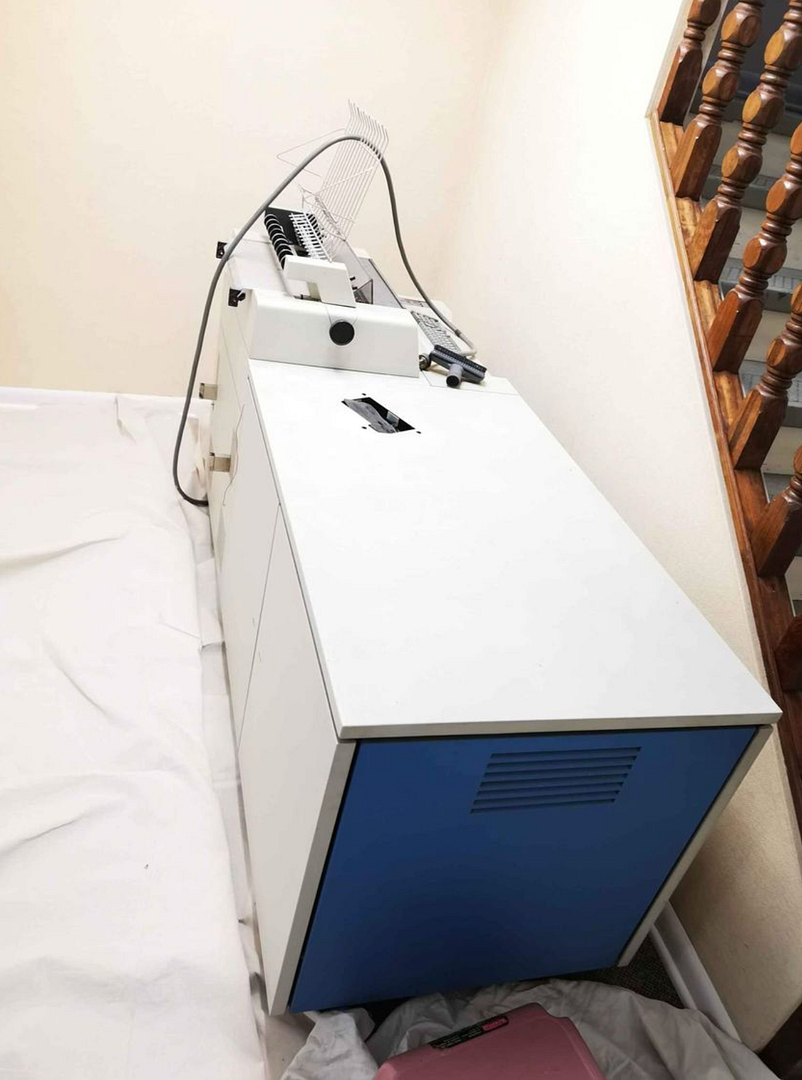
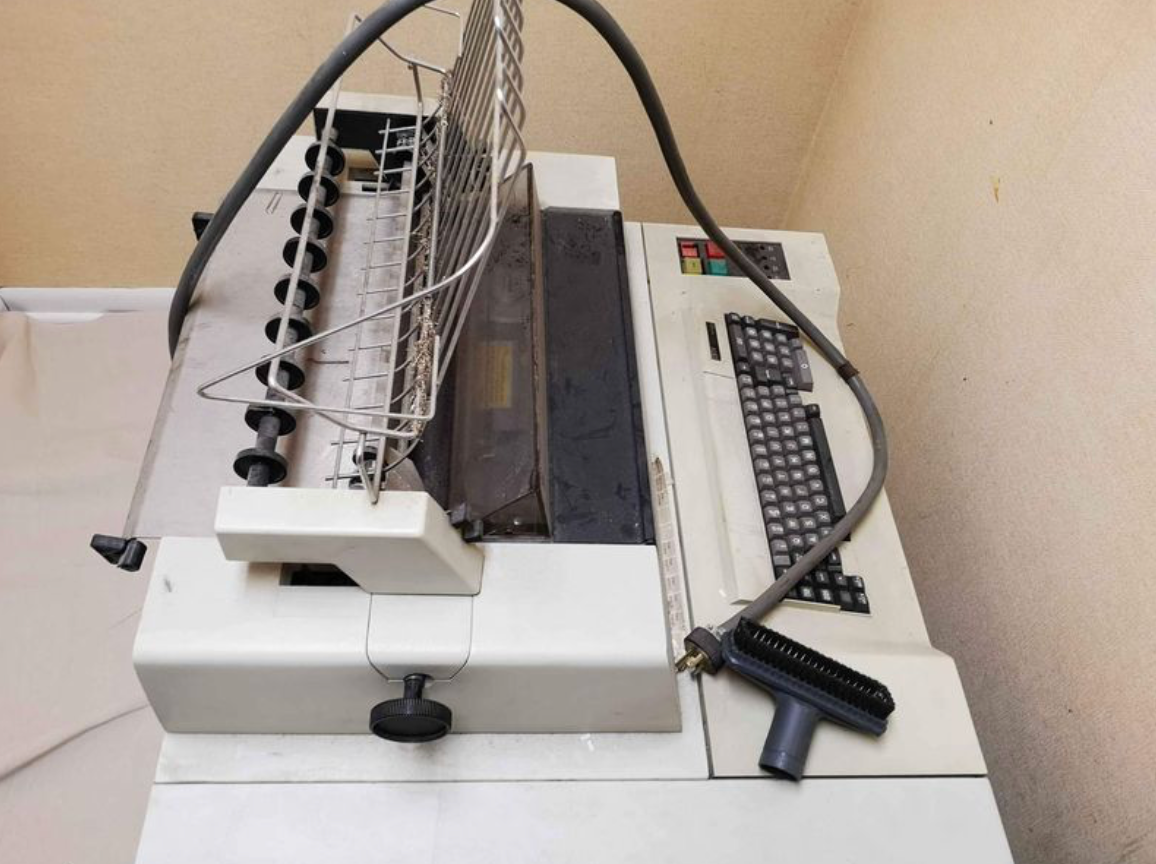
Serial No. 13159 NZ 105
So the relayed story was a business in a far-away mining town of Castlegar was redecorating and there was a System/32 that had been living in the basement for as long as anyone at the office could remember. Nobody knew how to operate it and nobody knew if it worked at all but it had to go and there it was. There was an honest five minutes thinking if this was a great idea. I mean it's the size of a desk, very heavy and a logistical challenge to collect but this was also probably the closest I was going to see one and at free there ran a far more real and far more malicious risk that puts fear into the minds of any computer collector: It was a free IBM keyboard. Zit-encrusted nerds across the country would crawl over eachother with dad's money to get their hands on the machine, only to pull the keyboard and drop the rest off at the town recycler. There is some monetary value in these things I can't comprehend that somehow through mental gymnastics justifies it being worth more than the computer or terminal itself. Remember kids, Mental Health is a real thing (even with this completely irrational scenario I just gave). On that alone I had to make the call and asked for contact details.
After a phonecall and some emails along with a schedule timetable and a financial assurance contribution of $250 (yes I was paying at this point for a free item) I would be there as soon as the snow melted with a team in hand which would be me and my friend Chris. That "soon" was six months away. In that time period schedules were settled, time off from work was booked, vehicle maintenance was done, budgets were made and research was conducted to make sure that on the day we arrived we would have all the tools, markers, labels and a plan needed to get it done before the office closed for the weekend. We had five hours.
April 14 finally rolls around and we depart at 4AM and spend the next six hours travelling through the mountains, trailer in tow. We arrive, introduce ourselves, talk to management and get to business, starting with an NDA.
I've made this mistake before. Collecting business machines, only to later find that the chain of command was not followed and equipment had to be surrendered. We were going to go at this in a different angle. Everyone knew everyone. Everyone knew the bionic desk was a computer, everyone knew that any data that might still remain was strictly confidential and would be purged if the System Control Program could not be reloaded. With that settled we got to work.
The computer was stored in a basement stairwell that was impossible to itself be an exit route. The better route was to the back exit which was straight up ten steps and out the door. More or less. Renovations had caused the route to become a narrow zig-zag hallway. It was wide enough by mere inches to accept the computer but the machine could not take the corners. Likewise lifting 640lbs up a flight of stairs into the grass was not going to happen with a team of two so it was decided we stick to the original plan and disassemble the machine to the point it was light enough to be tipped on its end, slid and turned down the hallway and then easily lifted up the stairs. As connectors were unplugged they would be photographed and marked to aid in reassembly later.
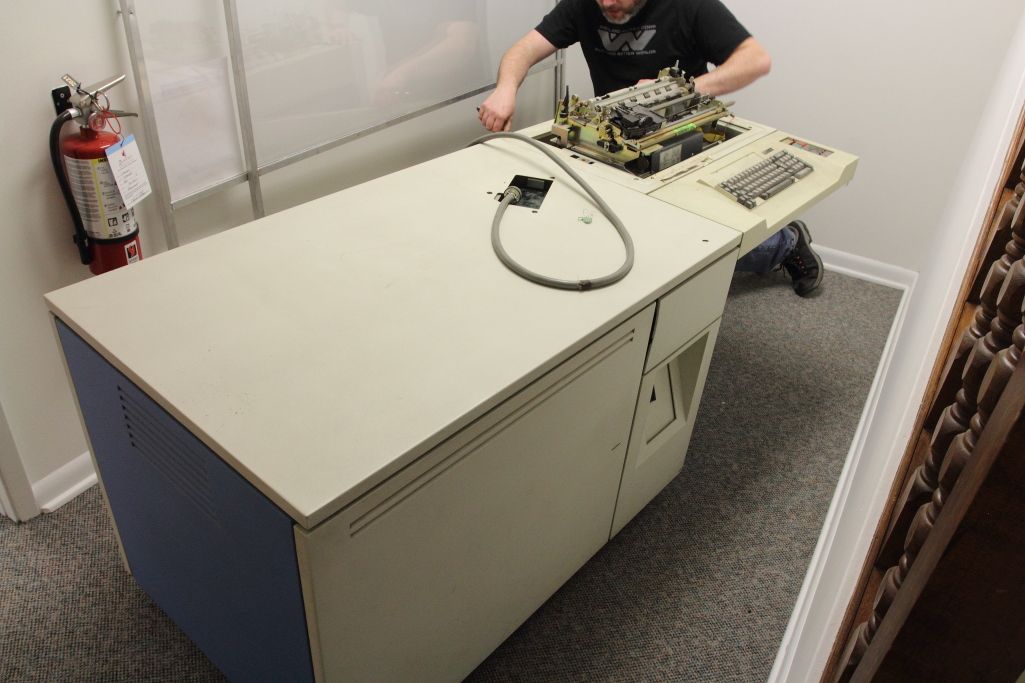
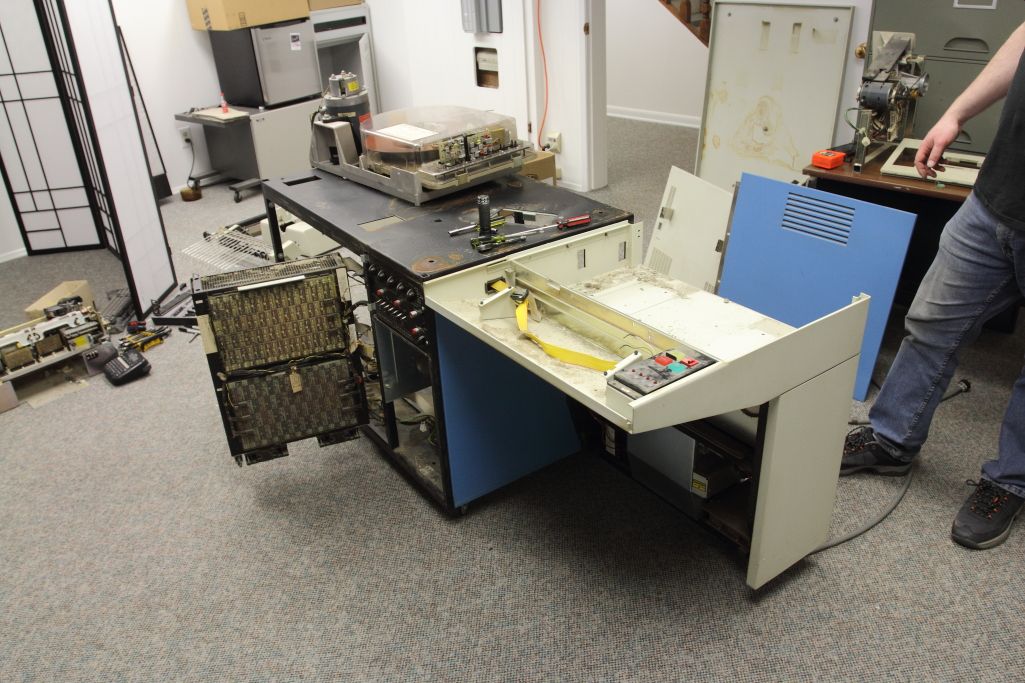
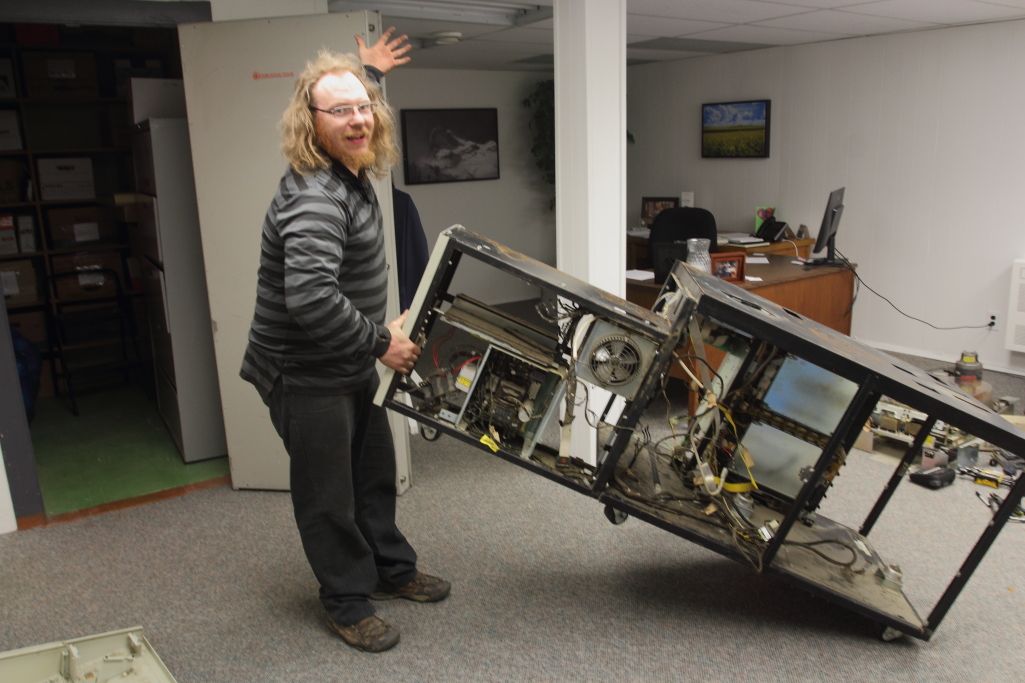
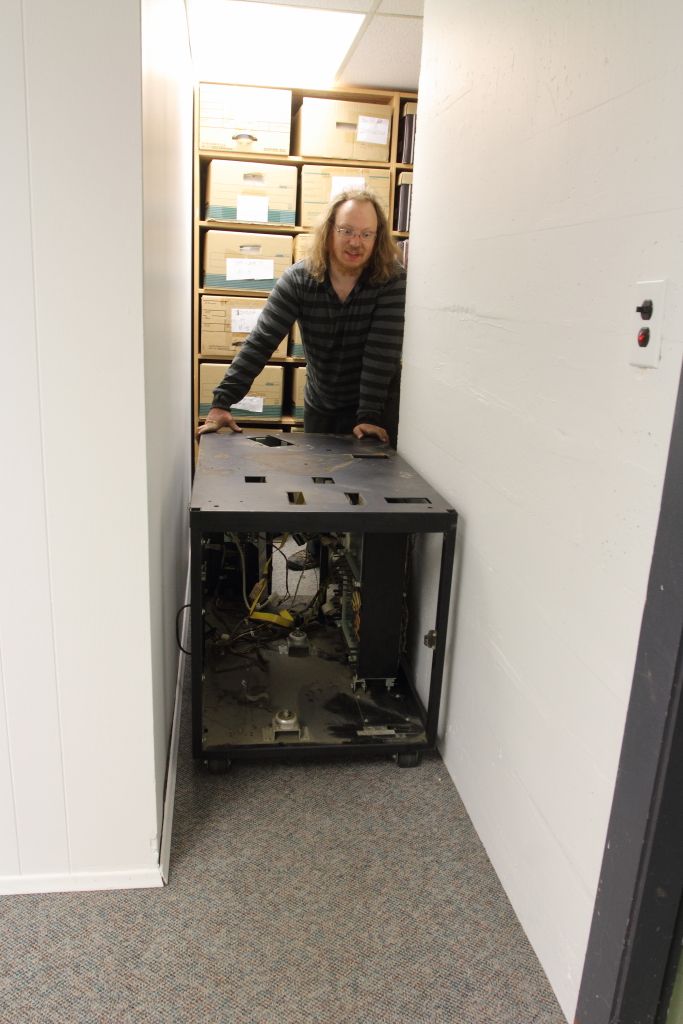
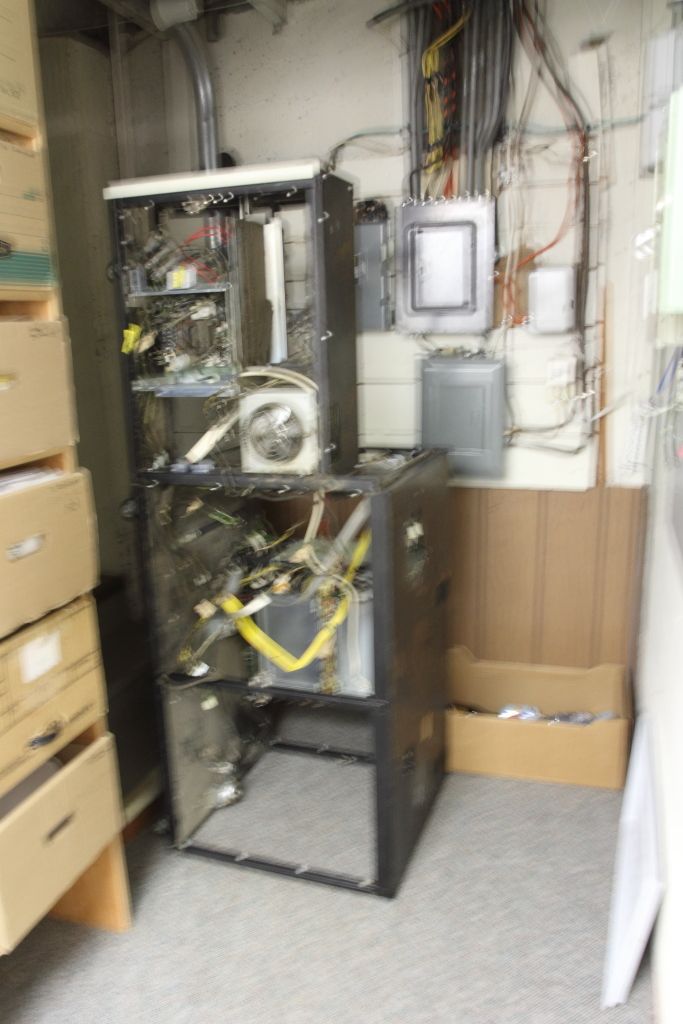
While we were fighting the clock and the room itself for angles that didn't reveal too much we still were able to look at a few things in the machine as they came out. It had the dot-matrix printer and at some point the power cord had failed with a broken spade connector. We wondered if this might of been why the machine was retired. We also noticed that unlike the Corestore's extremely heavy linear power supply this machine had a switchmode supply. Various QA marks scattered around the machine indicated the hardware was mostly built between September 1975 and April 1976, meaning this was also an early machine. The trapezoid box that sat on top of the verticlaly mounted display was also unfortunately missing. We had suspected it had been taken off at one point and stored inside the cabinet but it was not.
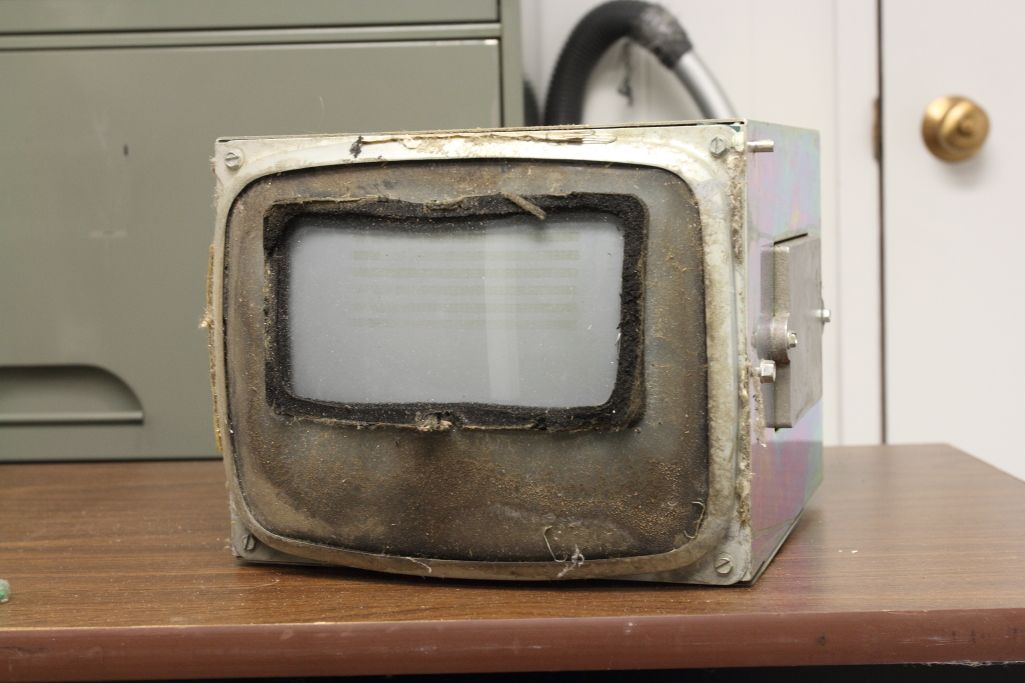
The monitor however was extremely revealing. IBM instead of using a small and narrow tube had instead used a regular 12" green phosphor CRT and just used about 1/3 of the total screen space for the display.

The single platter 5mb hard disk was also present and visually seemed to be in excellent condition. The defect map indicated when new the platter was perfect. The 1/6hp motor was far larger than any of us had ever thought. Prior to removal we followed IBM's service procedures and engaged the spindle lock and the head lock.
The rest of the machine seemed dusty but in very good condition overall with no animal intrusions, rust or physical damage like dents or scrapes. Acoustic foam that we found is of the dry variety and was easy to remove and immediately discard.
Now that the machine was light enough for one person to lift we made quick work of the stairs, spun it around on the grass and pushed it (carefully) down the hill and into the waiting trailer where it was tarped and strapped.
We brought the panels and components up in about ten minutes, vacuumed the room, did a final visual inspection and completed the loading process 45 minutes ahead of schedule.

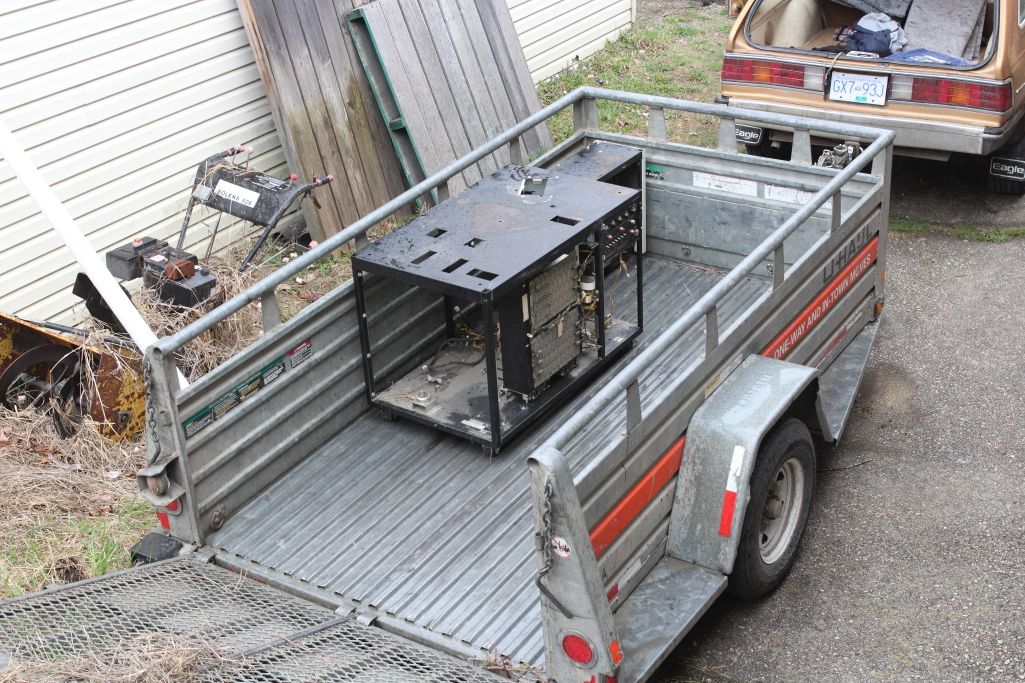

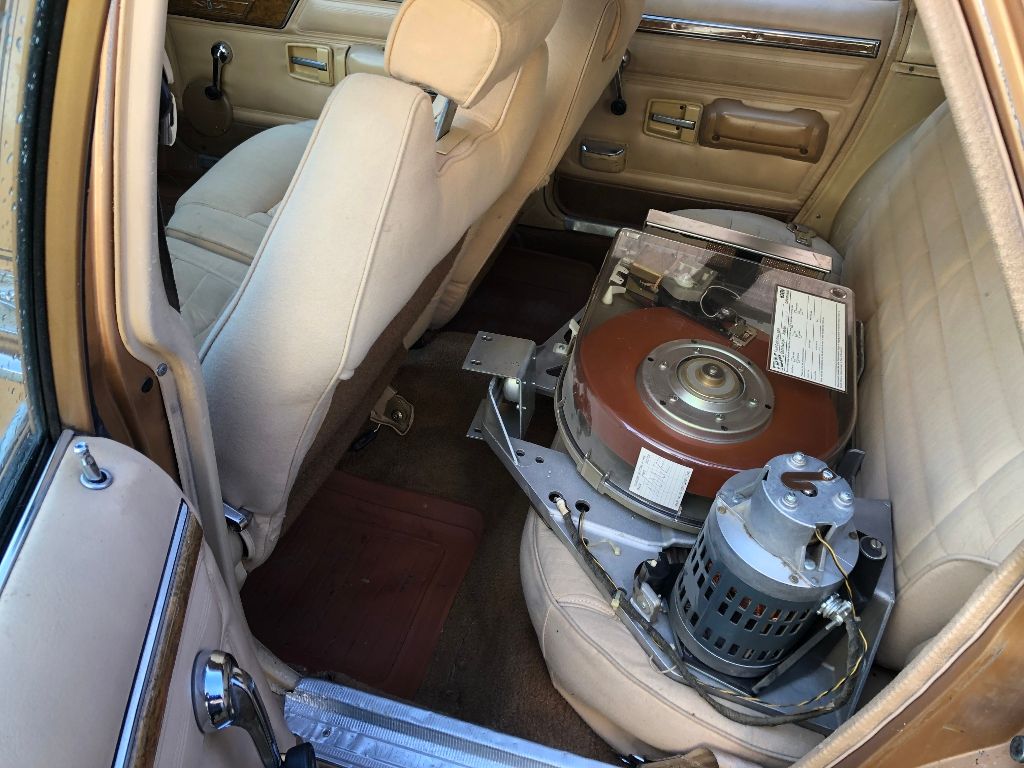
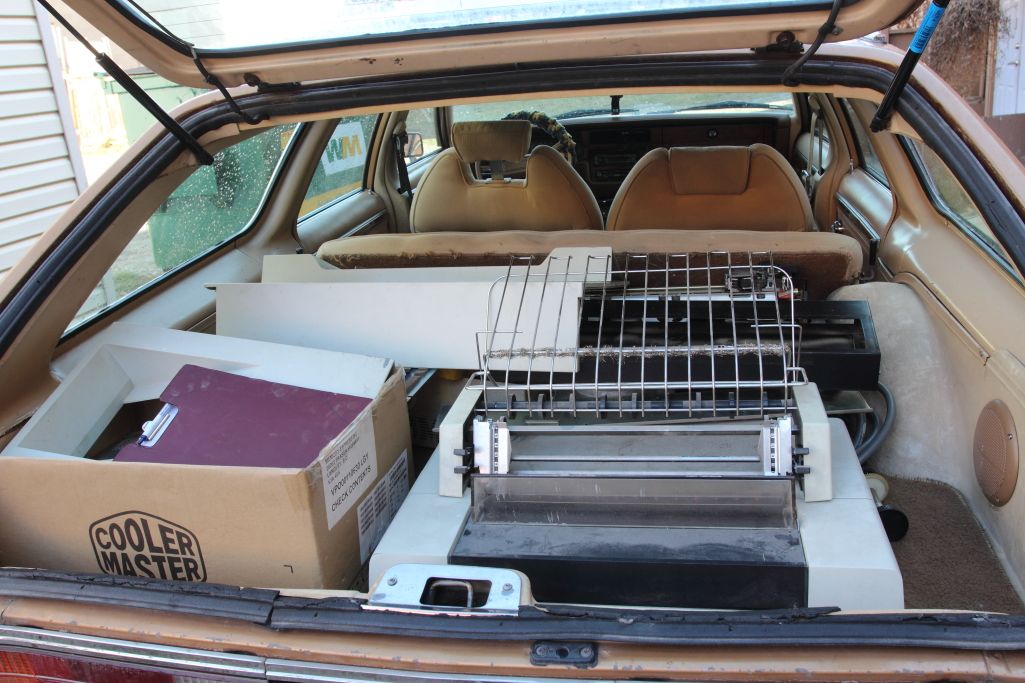
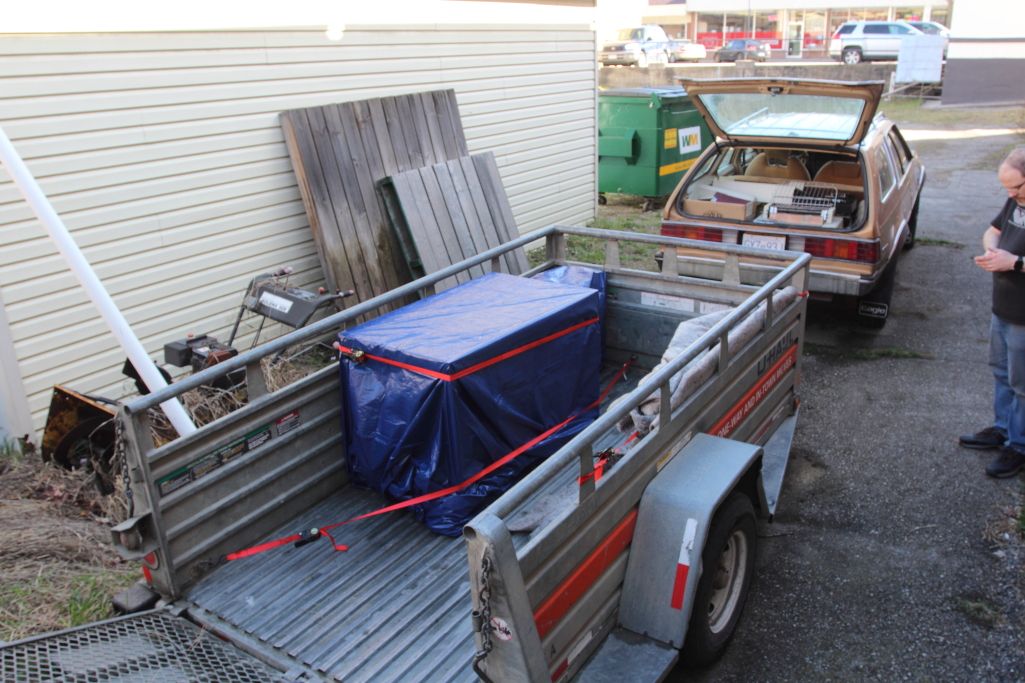
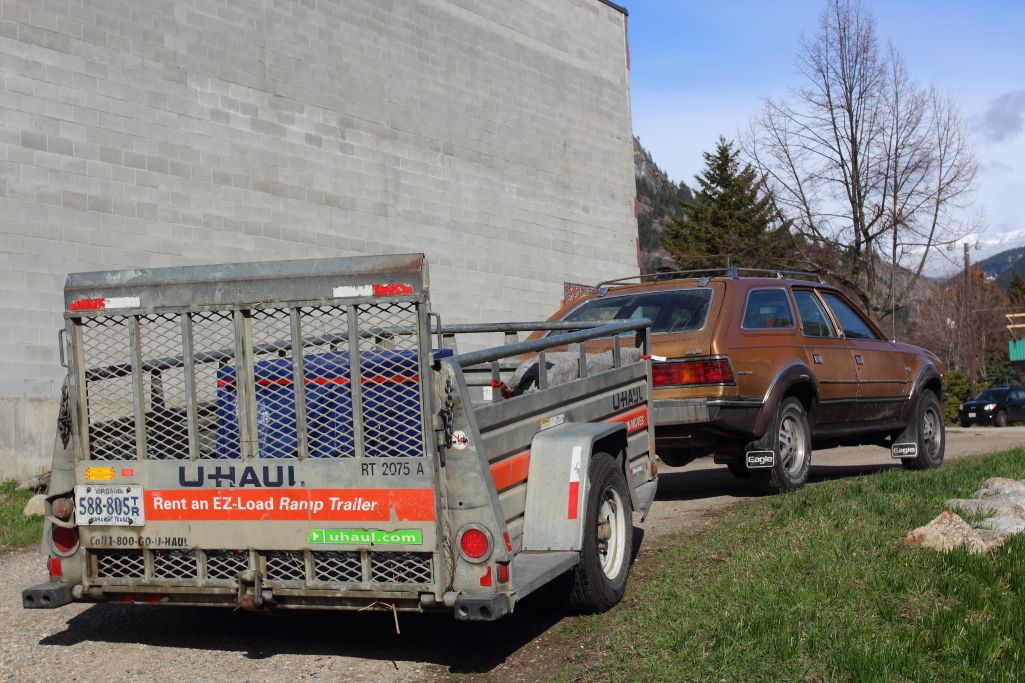
We arrived back at the house by 11:30 that night and unloaded the next morning.
Now comes the task of cleaning the components as they are reinstalled and the machine reassembled. The power supply being a switchmode needs to be very carefully gone over before waking it up as they are considerably more sensitive than a linear supply to age-related component failures such as the absolutely monolithic capacitors it uses. Actual storage of the machine remains to be resolved but for now it's safe in the garage.
These are neat machines. It's somewhat the successor to the System/3 which was a single-user business computer that you could probably fool someone as saying it was a mainframe but it wasn't necessarily that.
They were cheap. IBM struggled for years to get into the lower-end business market because most companies didn't need a mainframe and the System/3 was too large in one model or another to fit into most offices. It's rental and leasing costs also were generally cost prohibitive, however with all that against it that was not its downfall and in fact the System/3 was successful enough that in 1975 the System/32 was released to succeed it.
Smaller, backwards compatible and expandable. The entire computer was now small enough to fit through a doorway and was as tall as an office desk while using only 800w. It's rental rates were also considerably more attractive as well (typically being $1000/month in 1975, so it was still seriously expensive if you could not make efficient use of it) making it the start of another successful line of business computers that would eventually unify into the AS/400 and the modern "System i".
So anyways these machines now being considerably smaller began to make their way into more and more remote locations. Small towns, portable offices and private residences for self-employment gigs. Some machines were even purchased outright and a variety of options were available beyond more system memory and disk storage. Modems, mag card readers, magnetic ink cheque sorters and intelligent IBM card punch machines like the 129 where you can operate it as a card reader but also as a card punch peripheral for the system/32. It also featured compatibility with the IBM 3741 where data entry could take place remotely from the System/32 and delivered for processing via the then very new 8" floppy disk.
So a machine like that is extremely limited in its suite of applications that make sense out of its own niche operations and the machine itself is still quite large and very heavy, so to a then teen me with no income and the computers by that point being 30 years old and long obsoleted by later systems like the System/36 it was completely out of the question that I would find one. So onto the wish list it went.
Nearly 20 years later I get a message from a friend that while going through Facebook Marketplace a machine has appeared within the province. Not only that. It's free.


Serial No. 13159 NZ 105
So the relayed story was a business in a far-away mining town of Castlegar was redecorating and there was a System/32 that had been living in the basement for as long as anyone at the office could remember. Nobody knew how to operate it and nobody knew if it worked at all but it had to go and there it was. There was an honest five minutes thinking if this was a great idea. I mean it's the size of a desk, very heavy and a logistical challenge to collect but this was also probably the closest I was going to see one and at free there ran a far more real and far more malicious risk that puts fear into the minds of any computer collector: It was a free IBM keyboard. Zit-encrusted nerds across the country would crawl over eachother with dad's money to get their hands on the machine, only to pull the keyboard and drop the rest off at the town recycler. There is some monetary value in these things I can't comprehend that somehow through mental gymnastics justifies it being worth more than the computer or terminal itself. Remember kids, Mental Health is a real thing (even with this completely irrational scenario I just gave). On that alone I had to make the call and asked for contact details.
After a phonecall and some emails along with a schedule timetable and a financial assurance contribution of $250 (yes I was paying at this point for a free item) I would be there as soon as the snow melted with a team in hand which would be me and my friend Chris. That "soon" was six months away. In that time period schedules were settled, time off from work was booked, vehicle maintenance was done, budgets were made and research was conducted to make sure that on the day we arrived we would have all the tools, markers, labels and a plan needed to get it done before the office closed for the weekend. We had five hours.
April 14 finally rolls around and we depart at 4AM and spend the next six hours travelling through the mountains, trailer in tow. We arrive, introduce ourselves, talk to management and get to business, starting with an NDA.
I've made this mistake before. Collecting business machines, only to later find that the chain of command was not followed and equipment had to be surrendered. We were going to go at this in a different angle. Everyone knew everyone. Everyone knew the bionic desk was a computer, everyone knew that any data that might still remain was strictly confidential and would be purged if the System Control Program could not be reloaded. With that settled we got to work.
The computer was stored in a basement stairwell that was impossible to itself be an exit route. The better route was to the back exit which was straight up ten steps and out the door. More or less. Renovations had caused the route to become a narrow zig-zag hallway. It was wide enough by mere inches to accept the computer but the machine could not take the corners. Likewise lifting 640lbs up a flight of stairs into the grass was not going to happen with a team of two so it was decided we stick to the original plan and disassemble the machine to the point it was light enough to be tipped on its end, slid and turned down the hallway and then easily lifted up the stairs. As connectors were unplugged they would be photographed and marked to aid in reassembly later.





While we were fighting the clock and the room itself for angles that didn't reveal too much we still were able to look at a few things in the machine as they came out. It had the dot-matrix printer and at some point the power cord had failed with a broken spade connector. We wondered if this might of been why the machine was retired. We also noticed that unlike the Corestore's extremely heavy linear power supply this machine had a switchmode supply. Various QA marks scattered around the machine indicated the hardware was mostly built between September 1975 and April 1976, meaning this was also an early machine. The trapezoid box that sat on top of the verticlaly mounted display was also unfortunately missing. We had suspected it had been taken off at one point and stored inside the cabinet but it was not.

The monitor however was extremely revealing. IBM instead of using a small and narrow tube had instead used a regular 12" green phosphor CRT and just used about 1/3 of the total screen space for the display.

The single platter 5mb hard disk was also present and visually seemed to be in excellent condition. The defect map indicated when new the platter was perfect. The 1/6hp motor was far larger than any of us had ever thought. Prior to removal we followed IBM's service procedures and engaged the spindle lock and the head lock.
The rest of the machine seemed dusty but in very good condition overall with no animal intrusions, rust or physical damage like dents or scrapes. Acoustic foam that we found is of the dry variety and was easy to remove and immediately discard.
Now that the machine was light enough for one person to lift we made quick work of the stairs, spun it around on the grass and pushed it (carefully) down the hill and into the waiting trailer where it was tarped and strapped.
We brought the panels and components up in about ten minutes, vacuumed the room, did a final visual inspection and completed the loading process 45 minutes ahead of schedule.







We arrived back at the house by 11:30 that night and unloaded the next morning.
Now comes the task of cleaning the components as they are reinstalled and the machine reassembled. The power supply being a switchmode needs to be very carefully gone over before waking it up as they are considerably more sensitive than a linear supply to age-related component failures such as the absolutely monolithic capacitors it uses. Actual storage of the machine remains to be resolved but for now it's safe in the garage.
Last edited:

